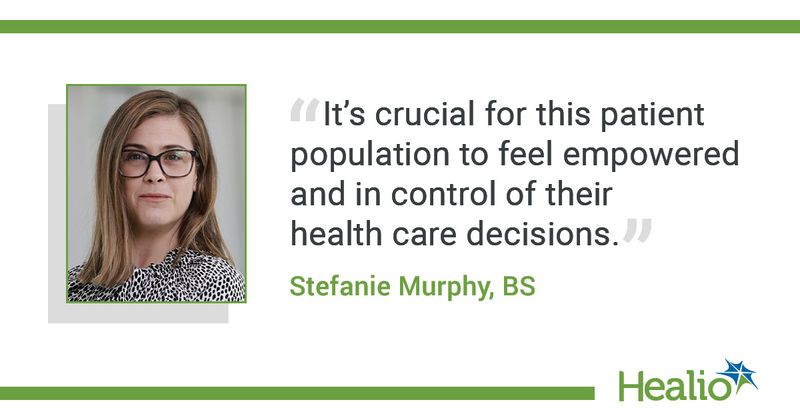Recognizing lung cancer screening barriers can increase number of eligible patients screened
Key takeaways:
- With insight from target patient groups, new strategies to encourage lung cancer screening were put into action and were successful in some patient demographics.
- Messaging on lung cancer screening was important.
WASHINGTON — A lung nodule detection program saw an increase in low-dose CT for Black and Hispanic individuals after addressing screening barriers, according to research presented at the American Thoracic Society International Conference.
“The research findings highlight the importance of tailoring recruitment strategies for lung cancer screening to address the specific barriers and motivators of the target patient population,” Stefanie E. Murphy, BS, associate vice president of Corporate Marketing at Temple Health, told Healio. “This may require improvements to referral pathways to better meet the patient’s needs.”

After conducting four focus groups, mainly consisting of patients aged 50 to 80 years who were insured and either current or former smokers, and listening to their concerns and personal experiences with lung cancer screening, Murphy and colleagues refined marketing strategies for the Temple Healthy Chest Initiative (THCI) to increase the number of patients undergoing lung nodule detection paired with comorbidity detection.
Researchers planned to target three issues related to lung cancer screening in their marketing recruitment and retention plan: patients’ lack of knowledge on this type of cancer screening; lack of trust with medical systems; and concerns regarding cost, time and transportation.
Notably, patients who were eligible for screening, African American and from North Philadelphia made up half or more of the patients in every focus group, according to the abstract.
After hearing out patients, researchers refined five strategies to encourage low-dose CT screening at THCI and saw that more Black individuals (39.94% vs. 4.5%), Hispanic individuals (17.79% vs. 1.8%) and women (53% vs. 41%) underwent low-dose CT screening through the THCI from October 2021 to September 2022 than in the National Lung Screening Trial from 2011.
The first strategy researchers used to encourage more patients to get screened for lung cancer involved sharing educational material that was culturally relevant and expressed in multiple languages across several different mediums. According to the abstract, one medium utilized was a website that featured stories from patients and a pack-year calculator. Advertising on social media, the radio and on search engines was another medium used to distribute this information.
“We discovered that low literacy levels can be a barrier to delivering lung cancer screening messages to many members of our community,” Murphy told Healio. “With this understanding, we can now create more concise and straightforward communications that direct readers to video content available in multiple languages. This approach can help increase awareness of the benefits of screening and screening logistics, as well as aid patients in understanding their ‘pack year,’ which is part of the screening criteria.”
Another strategy used was transitioning advertising messages from saying “lung cancer screening” to “chest screening.” Further, messaging about screening was shifted to be more positive and hopeful rather than negative and threatening.
“It was informative and crucial to discover that traditional messaging, such as ‘Lung Cancer Screening Saves Lives,’ may come across as too threatening for some populations, leading to a lack of interest and engagement in advertising or community outreach efforts,” Murphy told Healio. “As a result, we needed to make a significant change in our messaging strategy to emphasize positive framing, such as ‘chest screenings’ or ‘know your lung health,’ to encourage initial engagement. Once the patient shows interest, more in-depth discussions or content can focus on ‘cancer’ screening. It’s crucial for this patient population to feel empowered and in control of their health care decisions alongside their health care provider.”
To help patients with their worries over cost, transportation and more, new messaging for the THCI highlighted the support they offer, according to Murphy.
“Focus group participants expressed difficulties in navigating health care systems,” she told Healio. “In response, we shifted our messaging to emphasize the support provided by Temple's Health Chest nurse navigators, who can assist patients with everything from scheduling appointments to reviewing results and connecting them with specialists for incidental findings.”
The last strategy the THCI put into action after hearing from patients was creating referral pathways for primary care providers and employers, according to the abstract.
“Our approach to gaining a better understanding of our audience was unique,” Murphy told Healio. “We thought beyond our traditional marketing program and sought out the partnership of subject matter specialists at the Klein College of Media and Communications to conduct primary research and the Temple Center for Urban Bioethics to facilitate community building and outreach efforts. By assembling this collaborative team, we were able to encourage fresh perspectives that had an immediate impact on increasing low-dose CT volumes and promoting screening equity.”
The THCI will continue to utilize these strategies to bring in more eligible patients residing in North Philadelphia.
“At this time, we are focused on making a meaningful impact on lung cancer screening volumes and equity among the diverse populations served by Temple Health,” Murphy told Healio.

